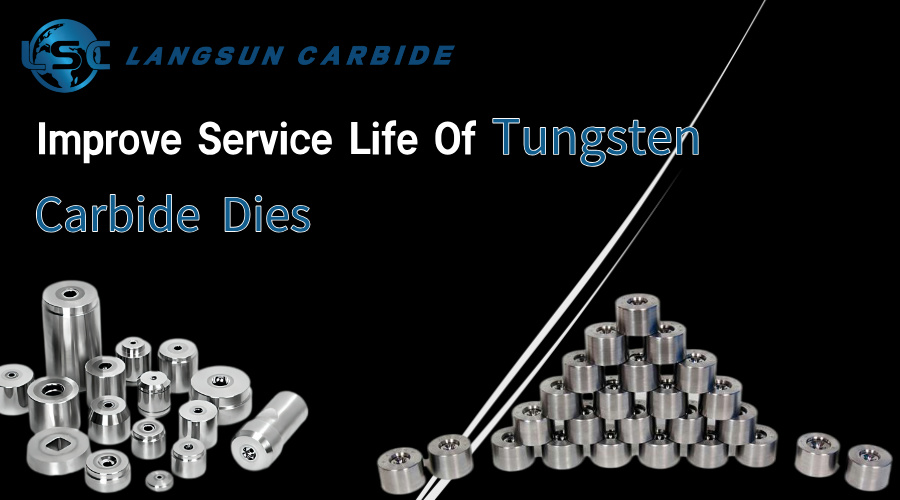Tungsten carbide dies are essential components in various industrial applications due to their exceptional hardness, wear resistance, and ability to endure harsh working conditions. However, extending their service life is a perennial challenge faced by industries aiming to optimize production efficiency and reduce costs.
Tungsten carbide dies are commonly used in processes such as metalworking, wire drawing, extrusion, and more. These dies are made from a composite material consisting of tungsten carbide particles bonded to a metal binder, usually cobalt. The high hardness of tungsten carbide combined with the toughness of the metal binder makes these dies extremely durable. However, even the toughest materials will wear out over time, so steps need to be taken to extend their life.
Mechanical Stress: Repetitive mechanical stress, such as high-pressure applications, can cause fatigue and eventual failure in tungsten carbide dies.
Thermal Cycling: Frequent heating and cooling cycles can lead to thermal fatigue and cracking.
Corrosion: Exposure to corrosive environments can degrade the binder phase, compromising the structural integrity of the die.
Abrasion: Continuous exposure to abrasive materials can erode the carbide surface.
Impact: Sudden impacts can cause chipping or micro-fractures.

Selecting the right grade of tungsten carbide for specific applications is paramount. Depending on the working environment, choosing a grade with the appropriate balance of hardness and toughness can significantly enhance durability. For instance, a higher cobalt content increases toughness but may reduce hardness, making it suitable for applications involving higher impact stresses.
Applying surface treatments such as chemical vapor deposition (CVD) or physical vapor deposition (PVD) coatings can provide an additional layer of protection. These coatings enhance wear resistance and reduce friction, thus minimizing the wear rate.
Using the right type of lubricant can reduce friction and wear. In metal forming processes, lubricants form a protective film between the die and the material being worked on, thereby reducing direct contact and wear.
Maintaining optimal operating conditions, such as controlling the temperature and pressure within recommended limits, can prevent premature die failure. Implementing a proper cooling system helps mitigate thermal stresses.
Routine maintenance and regular inspection of tungsten carbide dies can identify wear patterns and potential issues early. Techniques like non-destructive testing (NDT) can detect internal cracks and flaws before they become critical.
Employing advanced manufacturing techniques like hot isostatic pressing (HIP) can enhance the material properties of tungsten carbide, leading to improved density and reduced porosity. This results in dies with superior mechanical properties and longer service life.
Tungsten carbide dies are invaluable in various industrial applications due to their exceptional properties. However, to fully benefit from their capabilities, it is essential to optimize their usage and maintenance. By selecting the right grade of carbide, optimizing die design, implementing proper lubrication, conducting regular maintenance, controlling operating conditions, and investing in quality materials, the service life of tungsten carbide dies can be significantly extended. These practices not only enhance the efficiency and productivity of industrial operations but also lead to cost savings and improved operational reliability.